Updated: 02-Aug-2024
Soyuz is the successor of the OKB-500 Design Bureau founded in 1942 by Charomsky. It is known as TMKB or Tushino Engine Design Bureau, “Soyuz”.
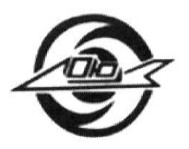
“TMKB Logo, Soyuz”
-Because Charomsky (see) was specialized in high-power Diesel engines, this was the first product.
-Later the M-501 of 6,000 hp was attempted, a seven-block radial engine of 6 cylinders, which was not produced.
-As the initial OKB-500 designed the RD-500, derived from the Derwent V. Towards 1960’s the RD-210 and R-210 rocket engines were designed under the direction of Chernyshev.
-Not related to TMKB, but with the same name "Soyuz" is the AMNTK aircraft engine complex, which has also designed engines under the aegis of Mikulin, Tumanskii, etc., since 1940.
-Under Mikulin's direction, the GAZ-300 engine-building plant was established and all engines bearing the number -300 after the designation are manufactured there.
-At the end of WWII, German engineers were available with whom they began to build the TRD-1 and TRD-2 reactors.
-Thereafter, the AM-3 (RD-3) was created with Tumanskii at the helm and under Mikulin's orders.

“AM-3”
-The AM-2, the aforementioned AM-3, the AM-5 and the AM-9 were produced.

“Soyuz AM-3”
-The AM-3 was of simple design and its only merit was its size, larger than its contemporaries.
-Known as RD-3, one of the most common versions was the RD-3 of 19285 lbf.
-P.F. Zubets, who was part of the design team, drew many consequences from the Mikulin M-209 that were inserted into this RD-3 engine.
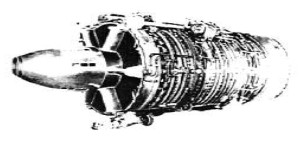
“RD-3M-500”
-The RD-3D delivered 19,150 lbf and the RD-3M-500, gave 20,950 lbf of thrust.
-The latter was made in China as WP8.
-The first RD-3 left the factory in 1952 for the first transport jet of the Soviet Union, the Tu-104.
-It had a very simple configuration with an 8-stage axial compressor, 14 cannular combustion chambers and a two-stage turbine.
-A unique feature of this engine is its starting system by a small S-300M turbine located in the central cone of the compressor air intake (Noelle style), giving 100 shp at 35,000 rpm.
-The RD-5 was already an engine that was designed entirely in the USSR.
-It happens that at the same time there was already the prototype of the Tumansky RD-9 with a transonic blade crown compressor, which were started to be built in large numbers from 1956.
-The RD-9, considered to be Tumansky's, had been conceived by the Mikulin OKB and its first designation was also AM-9 (AM for A. Mikulin).

“RD-9, with afterburner”
-There were many RD-9 versions, the main ones being RD-9B, -9AF2, -9BM, -9BF, with a little more than 6,000 lbf “dry” and over 8,000 lbf, with afterburning.
-The Tumanskii-Soyuz RD-11 (Official TRD-11 and sometimes known as R-37 and also as AM-11).
-It is perhaps one of the few very old engines still in service and due to the number built it is one of the most important reactors built in history.
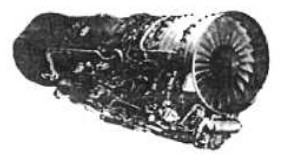
“Soyuz R-11”
-They were built in China by LEMC as WP-7 and in India by Hindustan Aeronautics Ltd (HAL).
-The best known series are the -AF, -AF2, -F, -FS, -F2S, -K, -K2 and -KA, all of these references followed by the number -300, revealing their provenance or origin.
-With afterburning the power rose from over 11,000 lbf to over 13,000 lbf in the latest developments.

“RD-11”
-The R-13 is credited to the designer Gavrilov and supplanted many R-11 engines in the late 1960s.
-They also gave way to the R-25 on aircraft such as the MiG-21 in successive modernizations. In China it was manufactured as WP-13. It delivered around 9,300 lbf dry and 14,500 with afterburning.

“R-15”
-The R-15, designed by Tumansky (sometimes Tumanskii) began production in 1959 and ended in 1966, after about 20,000 engines had been delivered.
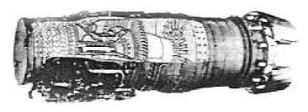
“R-15, cutaway”
-The R-15B-300, with 22,500 lbf thrust, was the engine for the MiG-25 and the R-15BD-300 version with 24,700 lbf was installed on the MiG-25PD and PDS.
-The R-15BF2-300 reached 29,700 lbf thrust, for the Ye-155M.

“Soyuz, RU-19”
-The RU-19 engine (Official TRD-29) was a versatile turbojet engine, sometimes as an APU or both.
-As an APU it was installed on the An-26 and An-30 aircraft and as a 1760 lbf thrust jet on training aircraft such as the Yak-30.

“RU-19”
-The R-21 engine production was supervised by N. Metskhvarichvili designated for this development.
-It was based on the R-11F, with a larger diameter and with afterburner.
-The power was 10,000/15,000 lbf thrust. It was mounted on the MiG Ye-8.
-The R-25 is from Gavrilov, today in Soyuz. It has a double shaft and consumes less than the R-13, which it succeeded It is completely interchangeable.
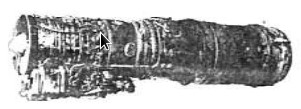
“R-25”
-The most curious thing about this engine is that the afterburner had two stages, the second being for high altitude combat. For MiG-21bis and Su-15bis. In India they were manufactured by HAL for its MiGs.
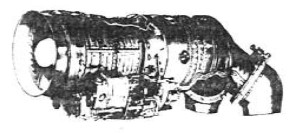
“R-27V”
-The R-27V-300 is the engine used on the Yak-36M and Ya-38 VTOL vertical takeoff aircraft.

“R-27V”
-With a thrust of about 15,000 lbf, these engines are available in the R-28-300 version, which is the same as the R-27VM-300, but with a simplified reference.
-Another version is the R-39P-300, used in four as support in the Yak-28VV bomber.
-Certain documents refer to an R-27-FM2-300 engine, due to Khachaturov. They were produced from 1967, and derived from the R-25 delivering 15,400/22,000 lbf of thrust.
-It was a twin-shaft, water-injected turbojet with afterburner. Others deal with the R-27-FM2-300 engine, derived from the Tumanskii -F2 at the -300 factory, today Soyuz AMNTK.
-The R-27-300 series are mounted on the MiG-23 in several advanced versions, equally between 15,000 and 22,000 lbf of normal thrust and with afterburning.
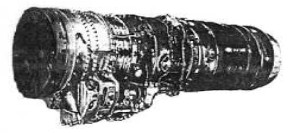
“Soyuz, R-29”

“Bottom view of the R-29”
-For certain MiG-23 and MiG-27, as well as Su-22, the Tumanskii R-29 engine was used.
-It used water injection on takeoff for which they carried a tank of about 28 liters on board. It was designed by Khachaturov.
-Versions of the R-29 were made such as the -B, -PN for the MiG-23. The B-300 was used for the MiG-27 and the R-29-BS-300 for the Su-22.
-Power ratings were 17,600 lbf dry and 21,800 lbf with afterburner.
-However, with water injection, this increased to 25,300 lbf for the B-300 and 27,500 lbf for the MiG-23MF.
-The designations R-31 and R-266 were used for versions of the R-15 in order to break International Air Federation records.
-The R-35F-300 engine is assigned to designer Khachaturov. The first engine was built in 1990 and was based on the R-29.

“R-35F-300”
-It is a twin-shaft turbojet with afterburner giving 18,850 lbf dry and 28,660 with afterburner. It is capable of resisting impacts from SAM surface-to-air missiles.
-The interesting R-79 is a vertical thrust/cruise engine, designed for the Yak-141.
-The R-79 is assigned to M. Kobchyenko and designated as R-79V-300 for the Yak-141 aircraft.

“Soyuz, R-79”
-The R-79-VK1 versions remained experimental and the R-79M that gave almost 40,000 lbf of thrust went to the new STOL aircraft. The normal power of the R-79 is between 24,200 lbf dry and 34,200 with afterburning.
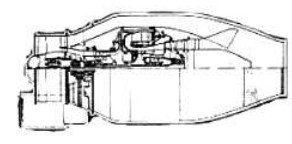
“R-123-300”
-The R-123 is a small engine for light, high-speed subsonic aircraft. It is a two-shaft turbofan. This engine has a compressor with two axial stages and one centrifugal stage, an inverted combustion chamber and one HP and one LP turbine. It only gives 950 lbf of thrust.
-The R-126-300, designed for high-class regional or business transport jets, reaches 12,000 lbf of thrust. It is destined for the Tu-324 project.
-The Soyuz R-127-300 is intended for small business jets, with almost 2,000 lbf of thrust.
-The new Soyuz RDK-300-10 is in this category, with the intention of being used in UAVs or as “boosters” for the takeoff of other aircraft.
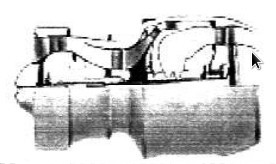
“Soyuz RDK-300-10”
-We should not overlook the fact that the Czechoslovakian Motorlet-built M-701C-500 engine is listed as a Tumanskii design and the first one was built in the USSR in 1961, with 1,960 lbf and single shaft. Today it is in the Soyuz group.

“R-195” (PiP)
-The Gavrilov R-195, produced from 1971 onwards, was a derivative of the R-13 and had an initial designation of R-95.
-It had a double shaft, no afterburner, and delivered 9,920 lbf of thrust. It was installed on the Su-25 and Su-29.
We have insufficient information to describe the R-210.
-The R-266 has already been related to the R-31.
-The RD-1700s are engines to meet the competition that the Russian Air Force put out in 1997, destined for the MiG-AT training aircraft. It only delivered 3,700 lbf dry and up to 6,600 with afterburning.

“RD-1700”
-The RD-2500 was announced in 2001 for the Yak-130, with the aim of competing with the Ukrainian AI-220 engines.
-it was derived from the RD-1700, with 5,500 lbf of thrust.
-In the field of turboshafts, the GTE-400 with 400 hp of steam per shaft went to the twin-engine Ka-118 helicopter.
-The TVD-450 turboprop version, delivering 450 hp, uses the core of the GTE-400 for the M-500 agricultural aircraft and as an alternative for other aircraft. It was launched around 1994.
-Also from 1994 is the TV-0-100, designed by Kobchyenko. It is a single-rotor turboshaft, giving 720 hp.
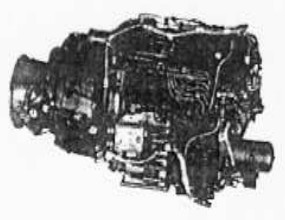
“TV-0-100”
-The TV-116-300 engine is still under development, with the intention of obtaining 1,000 shp per shaft.
-It has a two-stage centrifugal compressor with a single active side, an annular and inverted combustion chamber, and two-stage turbine.

“TV-116-300”
-The TV-128-300 is a small “pusher” type engine with two counter-rotating propellers at the rear, for 1,300 shp at takeoff.
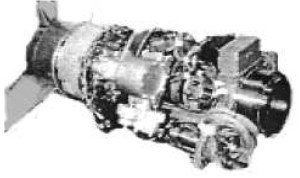
“Soyuz, TV-128-300”
-The TVD-1500 is a turboshaft for 1,500 shp, (1550 shp in the “1500V” version, in case of contingency) but its maximum power stipulated at takeoff is 1,300 shp.

“TVD-1500”
-It has reverse airflow, with the air intake on the right side of the illustration. The chambers in the center and exhaust and reduction gear on the left.
-Finally, to finish the Soyuz chapter, Novikov's Diesel DN-200 is also built at factory -300.
-It has two opposed pistons in each cylinder, it uses two crankshafts, one on each side of the engine.

“Soyuz DN-200”
-The engine is liquid-cooled, with 1760 cc displacement and giving 200 hp of power. Consumption is considered very low.
From Appendix 6: We complement the information in the main text, providing new images of the engines built in this new factory that emerged from the dismemberment of the USSR.
-The Soyuz production is based mainly on Tumanskii designs (see).
-Perhaps by the time the Soyuz was created it already started with engines like the R-11 and the R-13.
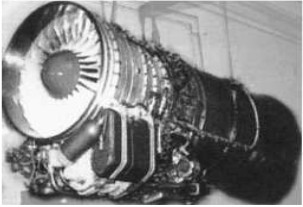
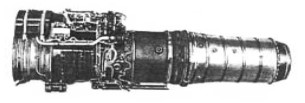
“Two views of the R-11”

“R-11, with afterburner”
-The R-25-300, designed by Tumansky with Sergei Alexevich Gavrilov, is derived from the R-13 of the MiG-21.
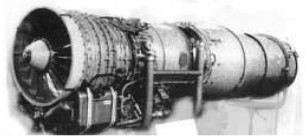
“R-25-300”
-The powerful R-15 was made to be mounted in pairs on the MiG-25, interceptor aircraft.
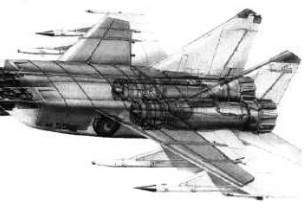
“2 Soyuz R-15 engines on MiG-25”
-The Russian Navy has vertical takeoff aircraft like the Yak-141 that uses the RD-41 engine in the front of the aircraft (behind the pilot) in groups and with some gimballing for maneuvers. Behind it there is an R-79V with a nozzle that can be oriented downwards and backwards.
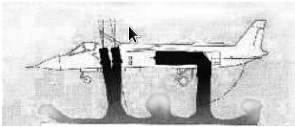
“The Yak-141 replaced the Yak-38 with the RD-36”
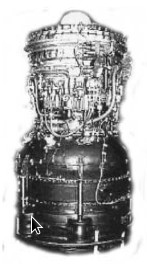
“RD-41 vertical engine”
-The R-79 in version V has its shape as in the picture below. We see that the exhaust nozzle is oriented downwards.
-We also see the detail of the nozzle and the movement mechanism.
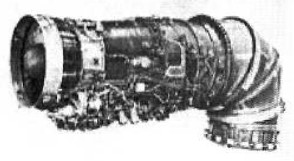
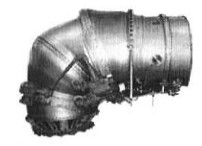
“R-79V and exhaust nozzle”
-The complete engine architecture is the same as that of the American JASF engine, for the same use.
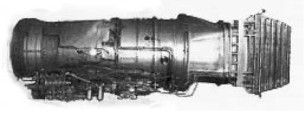
“R-179, derived from the R-79”
-The R-79V-300 gives 15,680 Kgf of thrust and the R-179-300 reaches 20,400 Kgf.
-Another one is the VK-21 that gives 11,300 kgf, or the R-134 delivering 11,000 Kgf.
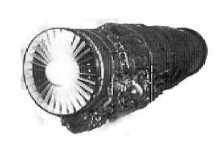
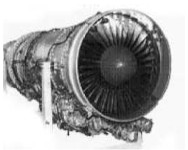
-The KR7-300 is also a Tumanskiy design (see). Others are the R-95-300, TP and TM versions. The R-125 and the R-135.
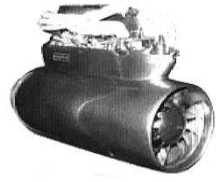
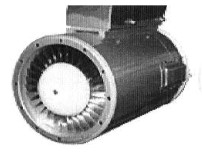
“The little R-125 and R-135”
-The R-135-300 is a modernization of the R-125-300. Finally, in this expansion, we should mention the Tumanskiy R-67-300 of 7,500-8,000 Kp.
Engines of SOYUZ
Model: AM-11
Arquitecture:
Compressor/s:
Combustion chambers:
Turbines:
Power / Thrust: / ---
Weight:
Model: AM-2
Arquitecture:
Compressor/s:
Combustion chambers:
Turbines:
Power / Thrust: / ---
Weight:
Model: AM-3 (RD-3)
Arquitecture:
Compressor/s:
Combustion chambers:
Turbines:
Power / Thrust: / ---
Weight:
Model: AM-5 (RD-5)
Arquitecture:
Compressor/s:
Combustion chambers:
Turbines:
Power / Thrust: / ---
Weight:
Model: AM-9 (RD-9)
Arquitecture:
Compressor/s:
Combustion chambers:
Turbines:
Power / Thrust: / ---
Weight:
Model: DN-200
Arquitecture:
Cooling:
Total Displacement:
Bore / Stroke: x
Power: @ rpm
Weight:
Model: GTE-400
Arquitecture:
Compressor/s:
Combustion chambers:
Turbines:
Power / Thrust: / ---
Weight:
Model: M-501, radial 7 blocks de 6 cils.
Arquitecture:
Compressor/s:
Combustion chambers:
Turbines:
Power / Thrust: / ---
Weight:
Model: R-11F
Arquitecture:
Compressor/s:
Combustion chambers:
Turbines:
Power / Thrust: / ---
Weight:
Model: R-123
Arquitecture:
Compressor/s:
Combustion chambers:
Turbines:
Power / Thrust: / ---
Weight:
Model: R-125
Arquitecture:
Compressor/s:
Combustion chambers:
Turbines:
Power / Thrust: / ---
Weight:
Model: R-126
Arquitecture:
Compressor/s:
Combustion chambers:
Turbines:
Power / Thrust: / ---
Weight:
Model: R-127
Arquitecture:
Compressor/s:
Combustion chambers:
Turbines:
Power / Thrust: / ---
Weight:
Model: R-13
Arquitecture:
Compressor/s:
Combustion chambers:
Turbines:
Power / Thrust: / ---
Weight:
Model: R-134
Arquitecture:
Compressor/s:
Combustion chambers:
Turbines:
Power / Thrust: / ---
Weight:
Model: R-135
Arquitecture:
Compressor/s:
Combustion chambers:
Turbines:
Power / Thrust: / ---
Weight:
Model: R-15
Arquitecture:
Compressor/s:
Combustion chambers:
Turbines:
Power / Thrust: / ---
Weight:
Model: R-179
Arquitecture:
Compressor/s:
Combustion chambers:
Turbines:
Power / Thrust: / ---
Weight:
Model: R-195
Arquitecture:
Compressor/s:
Combustion chambers:
Turbines:
Power / Thrust: / ---
Weight:
Model: R-21
Arquitecture:
Compressor/s:
Combustion chambers:
Turbines:
Power / Thrust: / ---
Weight:
Model: R-210
Arquitecture:
Compressor/s:
Combustion chambers:
Turbines:
Power / Thrust: / ---
Weight:
Model: R-25
Arquitecture:
Compressor/s:
Combustion chambers:
Turbines:
Power / Thrust: / ---
Weight:
Model: R-27
Arquitecture:
Compressor/s:
Combustion chambers:
Turbines:
Power / Thrust: / ---
Weight:
Model: R-28
Arquitecture:
Compressor/s:
Combustion chambers:
Turbines:
Power / Thrust: / ---
Weight:
Model: R-29
Arquitecture:
Compressor/s:
Combustion chambers:
Turbines:
Power / Thrust: / ---
Weight:
Model: R-31
Arquitecture:
Compressor/s:
Combustion chambers:
Turbines:
Power / Thrust: / ---
Weight:
Model: R-35
Arquitecture:
Compressor/s:
Combustion chambers:
Turbines:
Power / Thrust: / ---
Weight:
Model: R-37
Arquitecture:
Compressor/s:
Combustion chambers:
Turbines:
Power / Thrust: / ---
Weight:
Model: R-39
Arquitecture:
Compressor/s:
Combustion chambers:
Turbines:
Power / Thrust: / ---
Weight:
Model: R-67
Arquitecture:
Compressor/s:
Combustion chambers:
Turbines:
Power / Thrust: / ---
Weight:
Model: R-79 (R-79-300)
Arquitecture:
Compressor/s:
Combustion chambers:
Turbines:
Power / Thrust: / ---
Weight:
Model: R-95
Arquitecture:
Compressor/s:
Combustion chambers:
Turbines:
Power / Thrust: / ---
Weight:
Model: RD-11
Arquitecture:
Compressor/s:
Combustion chambers:
Turbines:
Power / Thrust: / ---
Weight:
Model: RD-15
Arquitecture:
Compressor/s:
Combustion chambers:
Turbines:
Power / Thrust: / ---
Weight:
Model: RD-1700
Arquitecture:
Compressor/s:
Combustion chambers:
Turbines:
Power / Thrust: / ---
Weight:
Model: RD-210
Arquitecture:
Compressor/s:
Combustion chambers:
Turbines:
Power / Thrust: / ---
Weight:
Model: RD-25
Arquitecture:
Compressor/s:
Combustion chambers:
Turbines:
Power / Thrust: / ---
Weight:
Model: RD-2500
Arquitecture:
Compressor/s:
Combustion chambers:
Turbines:
Power / Thrust: / ---
Weight:
Model: RD-36
Arquitecture:
Compressor/s:
Combustion chambers:
Turbines:
Power / Thrust: / ---
Weight:
Model: RD-500
Arquitecture:
Compressor/s:
Combustion chambers:
Turbines:
Power / Thrust: / ---
Weight:
Model: RDK-300-10
Arquitecture:
Compressor/s:
Combustion chambers:
Turbines:
Power / Thrust: / ---
Weight:
Model: RU-19 (TRD-29)
Arquitecture:
Compressor/s:
Combustion chambers:
Turbines:
Power / Thrust: / ---
Weight:
Model: TRD-1
Arquitecture:
Compressor/s:
Combustion chambers:
Turbines:
Power / Thrust: / ---
Weight:
Model: TRD-11
Arquitecture:
Compressor/s:
Combustion chambers:
Turbines:
Power / Thrust: / ---
Weight:
Model: TRD-2
Arquitecture:
Compressor/s:
Combustion chambers:
Turbines:
Power / Thrust: / ---
Weight:
Model: TV-116
Arquitecture:
Compressor/s:
Combustion chambers:
Turbines:
Power / Thrust: / ---
Weight:
Model: TV-128
Arquitecture:
Compressor/s:
Combustion chambers:
Turbines:
Power / Thrust: / ---
Weight:
Model: TV-O-100
Arquitecture:
Compressor/s:
Combustion chambers:
Turbines:
Power / Thrust: / ---
Weight:
Model: TVD-1500
Arquitecture:
Compressor/s:
Combustion chambers:
Turbines:
Power / Thrust: / ---
Weight:
Model: TVD-450
Arquitecture:
Compressor/s:
Combustion chambers:
Turbines:
Power / Thrust: / ---
Weight:
Model: VK-21
Arquitecture:
Compressor/s:
Combustion chambers:
Turbines:
Power / Thrust: / ---
Weight:


